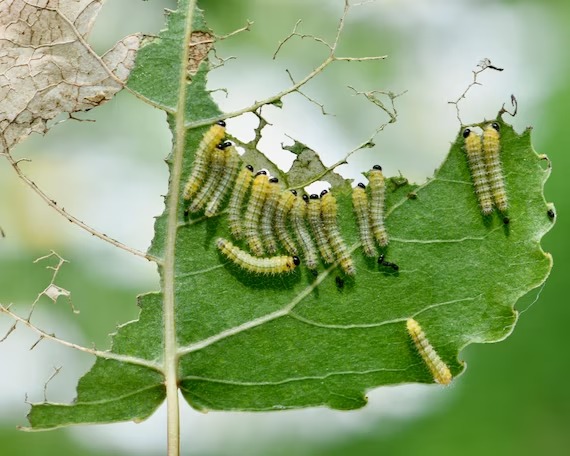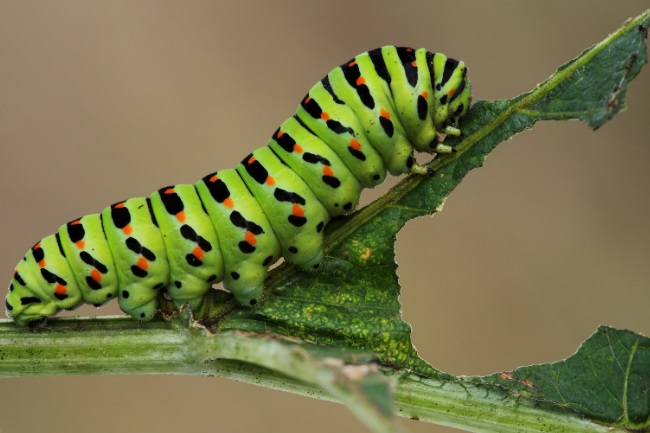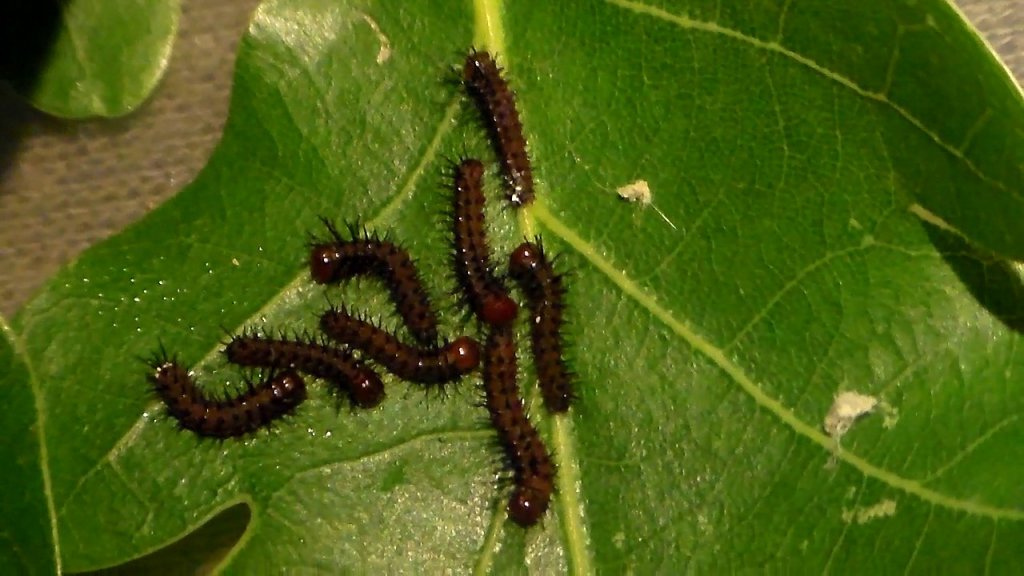Baby caterpillars are one of the tiniest versions of the insects. Have you ever thought about what a baby caterpillar looks like?
They’re like little creatures with soft, squishy bodies. Even though they’re small, they have parts just like bigger bugs. You will get to know about that, too.
A baby caterpillar is a teeny-tiny insect that’s just starting its journey in the world. It’s very small and has a special shape.
You might have seen bigger yellow caterpillars before, but the baby ones are super cute. Some baby caterpillars are very colorful, while others might be a bit plain. These little creatures are amazing because they can grow and change into something completely different.
Let’s take a closer look at what baby caterpillars are really like.
What Baby Caterpillars Look Like

When cute baby yellow caterpillars first emerge from their eggs, they’re incredibly small and cute. Their bodies are soft, almost like tiny tubes divided into three distinct parts: the head, the thorax, and the abdomen. This segmented structure is a characteristic feature shared with many other insects. Despite their miniature size, baby caterpillars are alike to their fully-grown counterparts. Have a Butterfly garden kit that includes habitat and live caterpillars for children to observe the amazing process.
Caterpillar Features – Eyes, Hairs, and More

Caterpillars possess fascinating features that set them apart in the insect world. One of the most special aspects is their eyes. Unlike the complex eyes of adult butterflies, caterpillars have small, semi-circular clusters of eyes known as stemmata or ocelli. These eyes primarily help them identify between light and dark rather than forming detailed images. Covering their bodies are countless tiny hairs called setae, giving them a blurry appearance. These setae serve various purposes, from protection to sensory functions. Additionally, caterpillars have mandibles and specialized mouthparts that allow them to munch on leaves and other plant materials. They also have a pair of antennae, crucial for navigation and locating food sources.
Caterpillar Legs – How They Move Around

Caterpillars are equipped with various legs that enable them to navigate their environment. Like most insects, they have six true legs located on their thorax, which they use for walking and gripping. However, what makes caterpillars unique are their prolegs. These are additional appendages found on their abdomen, resembling legs, but are actually fleshy stumps. Prolegs are important in helping caterpillars maintain a secure grip on various surfaces, allowing them to move with surprising agility. Use a bug catcher kit, which is a child-friendly kit with tools for safely catching and examining caterpillars and other insects.
Growing Up – Caterpillars to Pupation
As baby caterpillars emerge from their eggs, their primary focus becomes growth. They excessively consume leaves and plant material to fuel this rapid development.
However, it’s important to note that at this stage, they’re still too small to undergo the changing process that leads to becoming a butterfly or moth.
Before this pupation stage, caterpillars must first obtain a sufficient size and store adequate nutrients within their bodies. This preparatory phase sets the foundation for the remarkable changes that lie ahead.
The duration of this growth period can vary significantly between different species of caterpillars, with some reaching maturity in just a few weeks while others require several months or even years to complete this crucial stage of their life cycle.
Pupation – Caterpillar Changes into a Moth or Butterfly

Pupation marks an important moment in the life of a caterpillar. After a period of intensive feeding and growth, the caterpillar begins on the next stage of its transformation. For moths, this involves the construction of a silk cocoon, while butterflies go for a chrysalis.
Within this protective enclosure, profound changes occur. The caterpillar’s body undergoes a complete reorganization, and new adult structures begin to form. Metamorphosis during pupation is a process that can span weeks or months, varying from species to species.
It is within this sealed chamber that the caterpillar’s journey towards becoming a fully-formed butterfly or moth truly takes shape. As the days pass, the caterpillar’s internal structures develop, showing the amazing growth process.
How Fast Caterpillars Grow
The growth rate of caterpillars is truly astounding. In this change process, these tiny creatures show remarkable efficiency in utilizing the nutrients they consume.
Some species can double in size within a mere matter of days, a testament to the urgency with which they try to reach a size favorable to survival. This accelerated growth is a survival strategy.
Caterpillars are highly unsafe to predators, making swift development important for their chances of reaching the pupation stage. The rapid pace at which they grow is a powerful defense mechanism against potential threats, allowing them to outpace danger and ultimately undergo their incredible metamorphosis. Use a magnifying glass for a closer look at the details of baby caterpillars and their features.
Shedding Skin for Growth

Caterpillars possess exoskeletons, providing them with a protective outer shell. However, as they grow, their existing skin becomes a constraining factor. When a caterpillar reaches the limit of its current external covering, it faces a critical juncture. To allow further growth, it must undergo the process of shedding its old skin, a phenomenon known as molting.
Conclusion
So it’s clear now that a baby caterpillar is a tiny, soft creature with three parts to its body that are very useful for the caterpillar. It starts small but grows quickly by eating a lot of leaves. Their eyes are different from adult bugs, and they have special hairs on their bodies.
Caterpillars also have many legs to help them move around. When they’re ready to become butterflies or moths, caterpillars make a safe place around them. So, the next time you see a baby caterpillar, know that it carries the promise of an amazing change.
Nature truly is full of wonders.
Be sure to check out these other posts for more fascinating insights:

